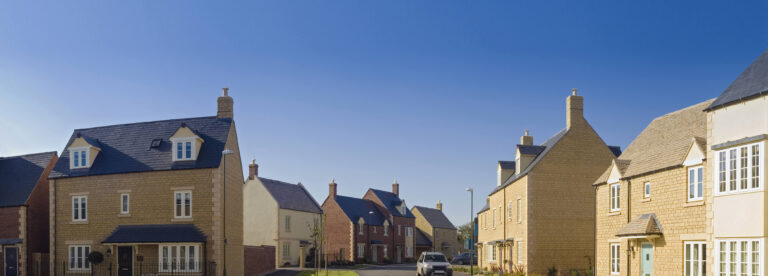A benefit in kind tax charge applies other than in very limited circumstances where an employer provides an employee with living accommodation. The charge applies regardless of how much the employee earns. It also applies even if the employee doesn’t actually use the living accommodation –the fact that the employer has provided it and it is available for the employee’s use is sufficient to trigger the tax charge.
The amount on which the employee is taxed is the cash equivalent of the benefit of the living accommodation. Specific rules apply to work this out. Where the cost is at least £75,000 an additional charge also applies.
The starting point is to work out the basic charge. This is found by taking the greater of the annual value of the accommodation and any rent paid by the employer for the accommodation, less any amount paid by the employee in rent.
The ‘annual value’ for a property is the rent which it might reasonably be expected to fetch if the tenant met the costs usually associated with a tenant and the landlord undertook to cost of repairs, insurance and other expenses usually met by the landlord.
For properties in England and Wales, the annual value is based on the 1973 gross rating value. If there is no rateable value set, the District Valuer can confirm or provide a figure. This will apply to newer properties.
However, if the employer rents the property and the rent paid by the employer is higher than the rateable value, the rent paid is used instead in working out the taxable benefit.
Example 1
An employer provides living accommodation for an employee throughout 2010/11. The employer rents the flat at a cost of £575 per month. The flat has a gross rateable value of £2,000. The employee does not pay any rent.
The basic charge is found as follows:
|
|
£ |
£ |
|
Higher of: |
|
|
|
Rateable value |
2,000 |
|
|
Rent paid by employer (£575 x 12) |
6,900 |
|
|
|
|
6,900 |
|
Less: rent paid by employee |
|
(nil) |
|
Basic charge |
|
6,900 |
The cash equivalent of the basic charge is £6,900.
An additional charge applies if the living accommodation that is provided to the employee costs more than £75,000. The cost is generally the amount paid for the accommodation, plus any amount spent on improving it prior to making it available to the employee. If the employee makes a contribution to the cost, this is deducted as is any amount paid by the employee for the grant of the tenancy.
In a case where the employer has held an interest in a property for six years prior to it being occupied by the employee and the property was first occupied after 30 March 1983, the market value at the date that the employee took up residence is used instead of the cost. This is adjusted to reflect the cost of subsequent improvements and any contributions made by the employee.
The additional charge is found by multiplying the ‘official rate of interest’ for the period by the excess of the cost over £75,000 and deducting any rent paid by the employee which was not deducted in calculating the basic charge (excess rent).
Example 2
A company buys a property for £200,000 and spends £20,000 improving it before letting it out to an employee. The property has a gross rateable value of £3,000. The property is made available to an employee throughout 2010/11. The employee pays rents of £300 per month.
The official rate of interest is 4%.
Basic charge
|
|
£ |
|
Rateable value |
3,000 |
|
Less: rent paid by employee 12 x £300 |
(3,600) |
|
Excess rent |
(600) |
As the rent paid by the employee is more than the rateable value, the basic charge is nil. The excess rent of £600 is deducted in calculating the additional charge.
|
|
£ |
|
Cost of property |
200,000 |
|
Add: cost of improvements |
2,000 |
|
|
202,000 |
|
Less: £75,000 |
(75,000) |
|
Excess cost |
127,000 |
|
£127,000 @ official rate of interest (4%) |
5,080 |
|
Less: excess rent |
(600) |
|
Additional charge |
4,480 |
The cash equivalent of the benefit is the sum of the basic charge and the additional charge. In this case there is excess rent and the basic charge is nil, so the cash equivalent of the benefit is the additional charge of £4,480.
Reporting the Benefit
The employer must report the cash equivalent of the benefit on the employee’s form P11D, which for 2010/11 must be sent to HMRC by 6 July 2011. In the rare event that the employee enjoys the benefit of living accommodation and earns less than £8,500 a year, (including the cash equivalent value of the living accommodation and other benefits), the benefit must be reported on form P9D rather than form P11D.
NICs
There are no employee NICs to pay where living accommodation is provided. However, the employer must pay (employer only) Class 1A NICs on the cash equivalent of the benefit as returned on the P11D. These are payable at the employer rate (13.8% for 2011/12 and 12.8% for 2010/11). No Class 1As apply where the living accommodation is provided to a P9D employee.
Tax-Free Benefit
In certain limited circumstances it is possible to provide an employee with tax-free living accommodation. This applies where:
• The living accommodation is provided because of a domestic or personal relationship rather than because of the employment (e.g. a landlord lets out several properties and his son who works for him lives in one of the properties);
• The accommodation is local authority accommodation and is provided to a local authority worker on the same terms as it is made available to non-employees;
• It is necessary for the employee to live in the accommodation to be able to do his or her job properly, for example agricultural workers living on farms;
• It is customary to provide accommodation so that the employee do his or her job properly., for example a pub landlord living on the premises; or
• There is a special threat to the employee’s security and the employee has to live in the accommodation as part of the arrangements for his or her personal security.
Other Costs
Where the employer also meets other costs relating to the property, a further tax charge may arise. The nature of the charge will depend on whether the employer pays the provider directly (in which case the benefit is reported on the forms P9D or P11D) or whether the employee meets the costs initially and is later reimbursed (in which case the employer must operate PAYE and NIC on the amount reimbursed). However, if the provision of the accommodation is exempt, the employer can meet the cost of council tax and sewerage charges tax-free.
Practical Tip
The provision of living accommodation can be provided tax-free it falls within one of the exemptions outlined above. Otherwise a benefit in kind charge may arise, regardless of the employee’s earnings level.
This is a sample article from the monthly Property Tax Insider magazine. Go here to get your first free issue of Property Tax Insider.




